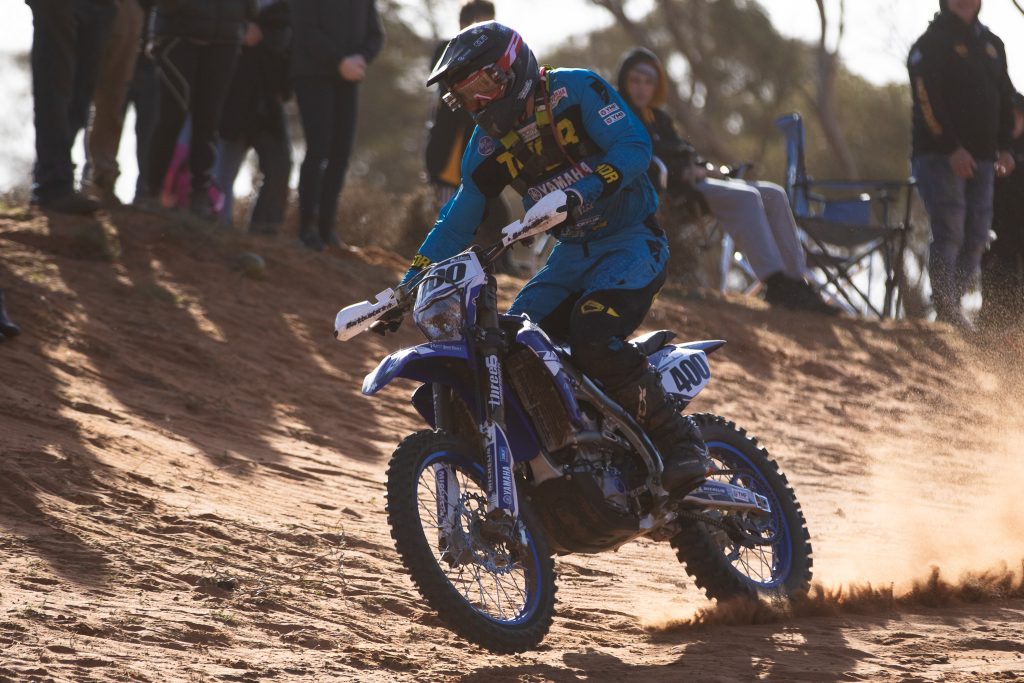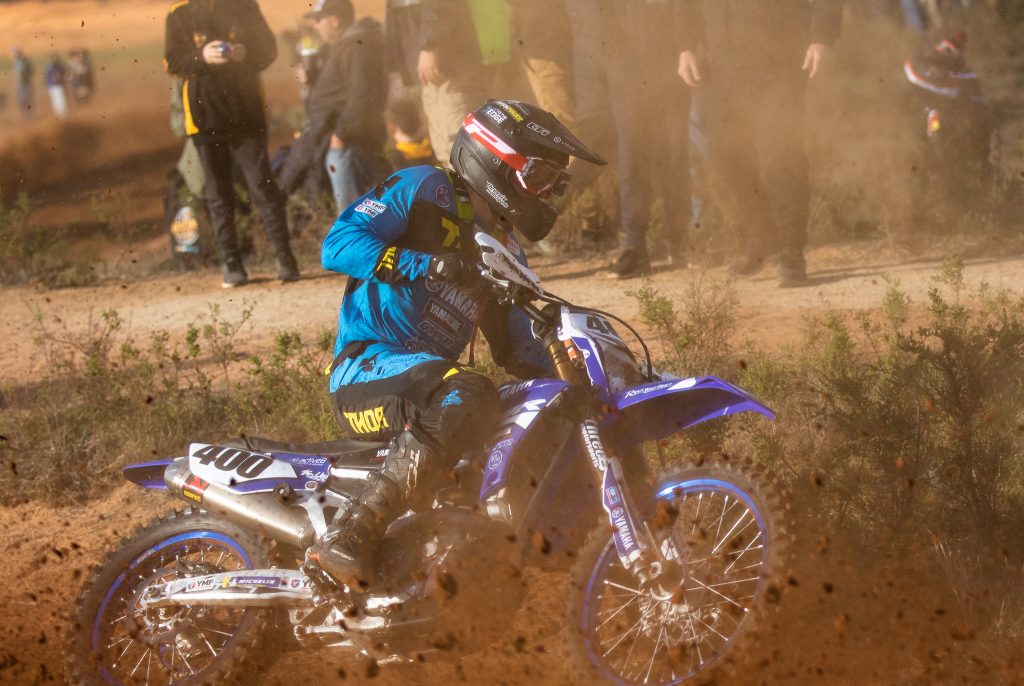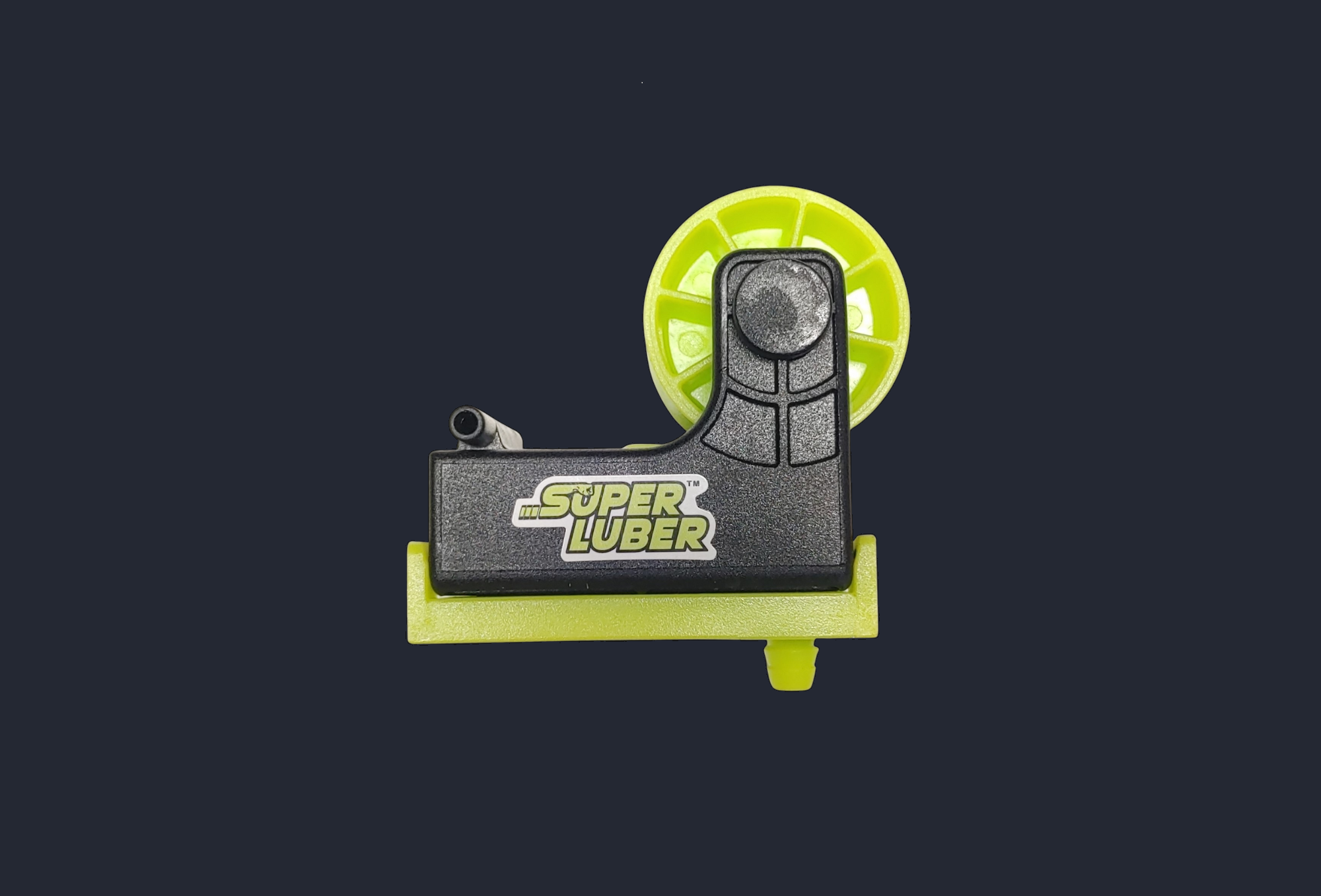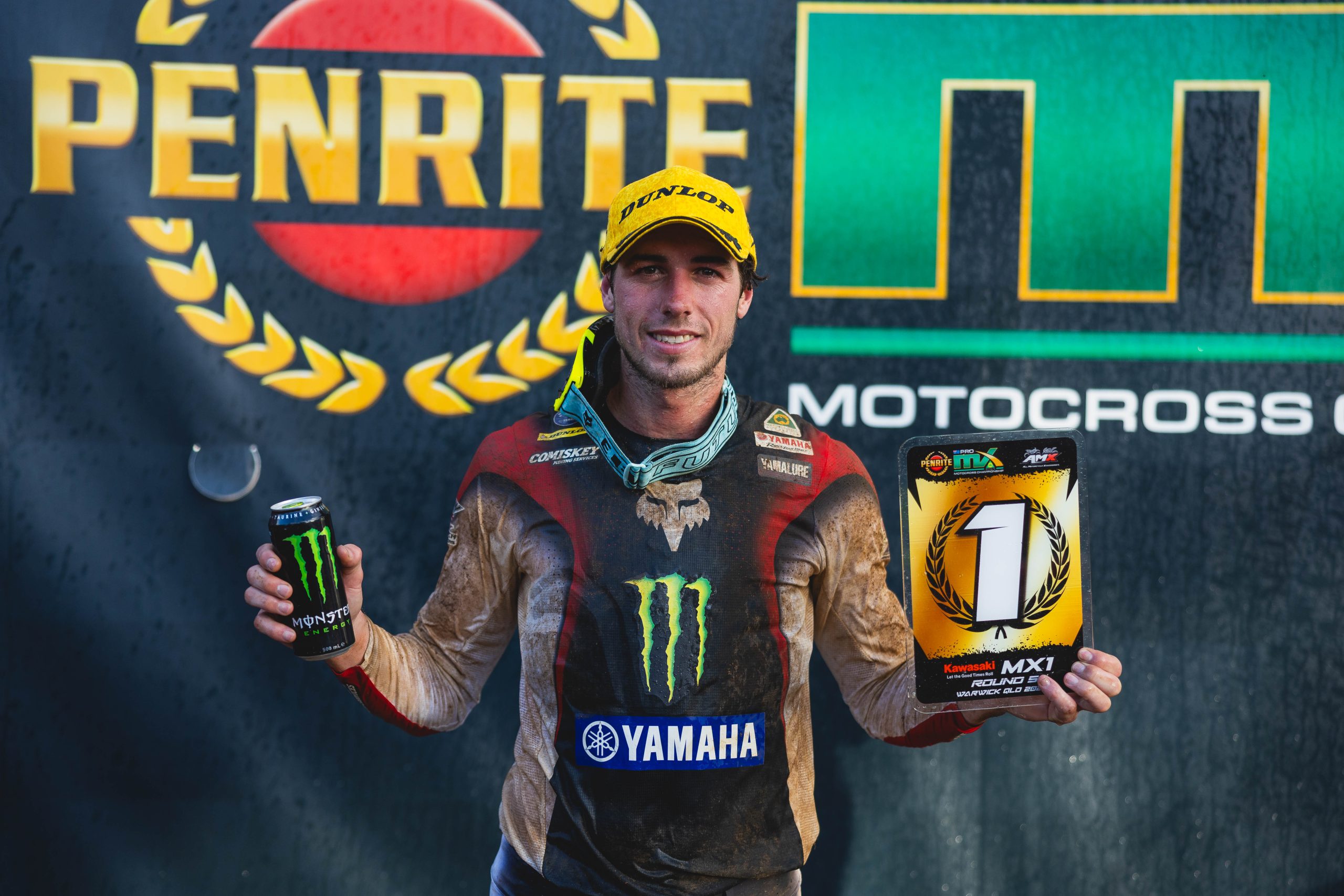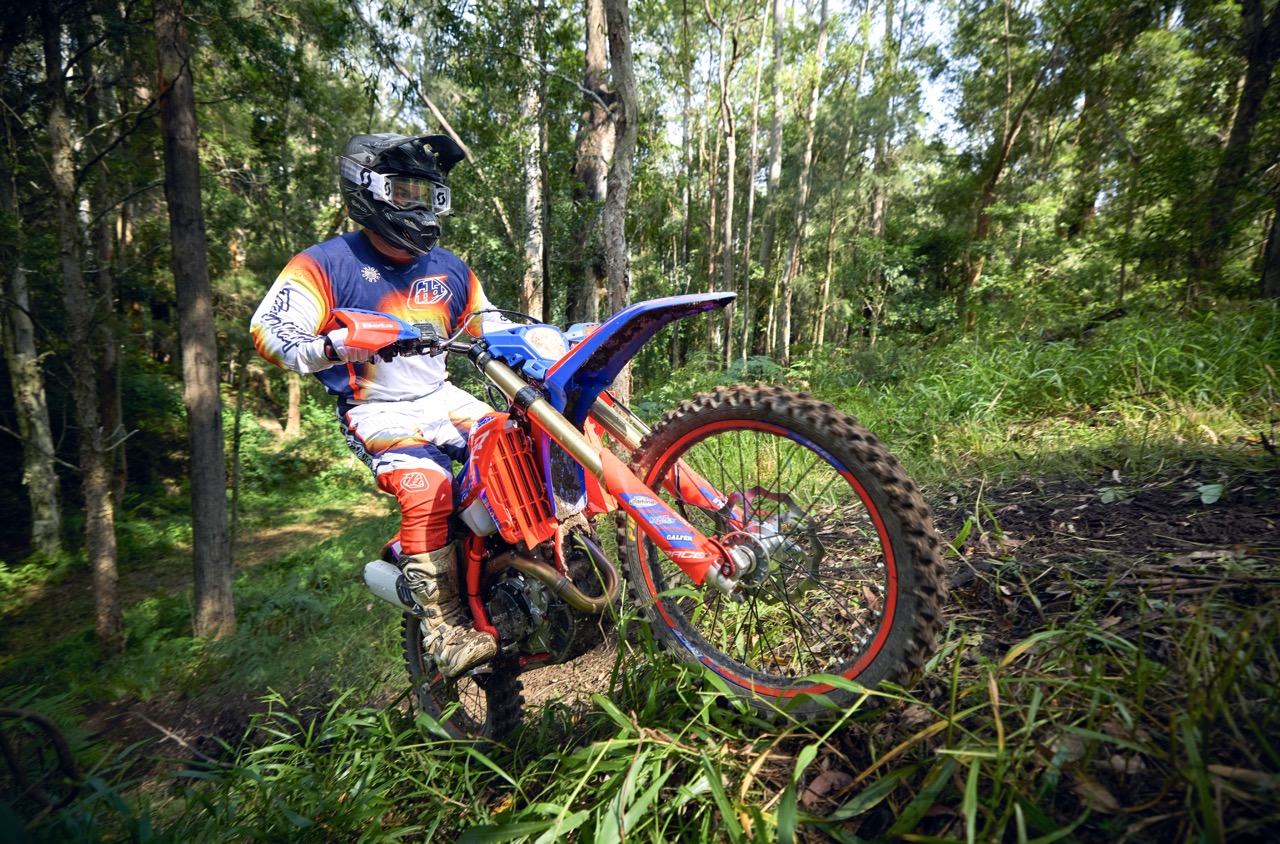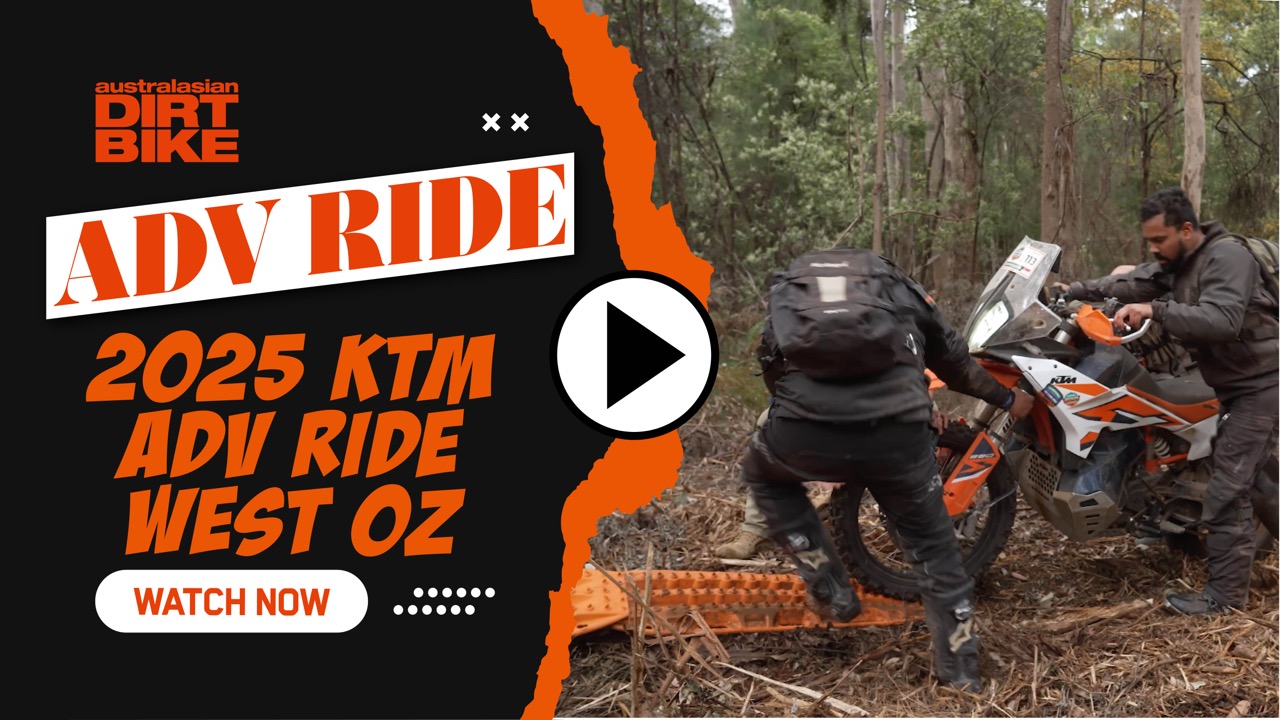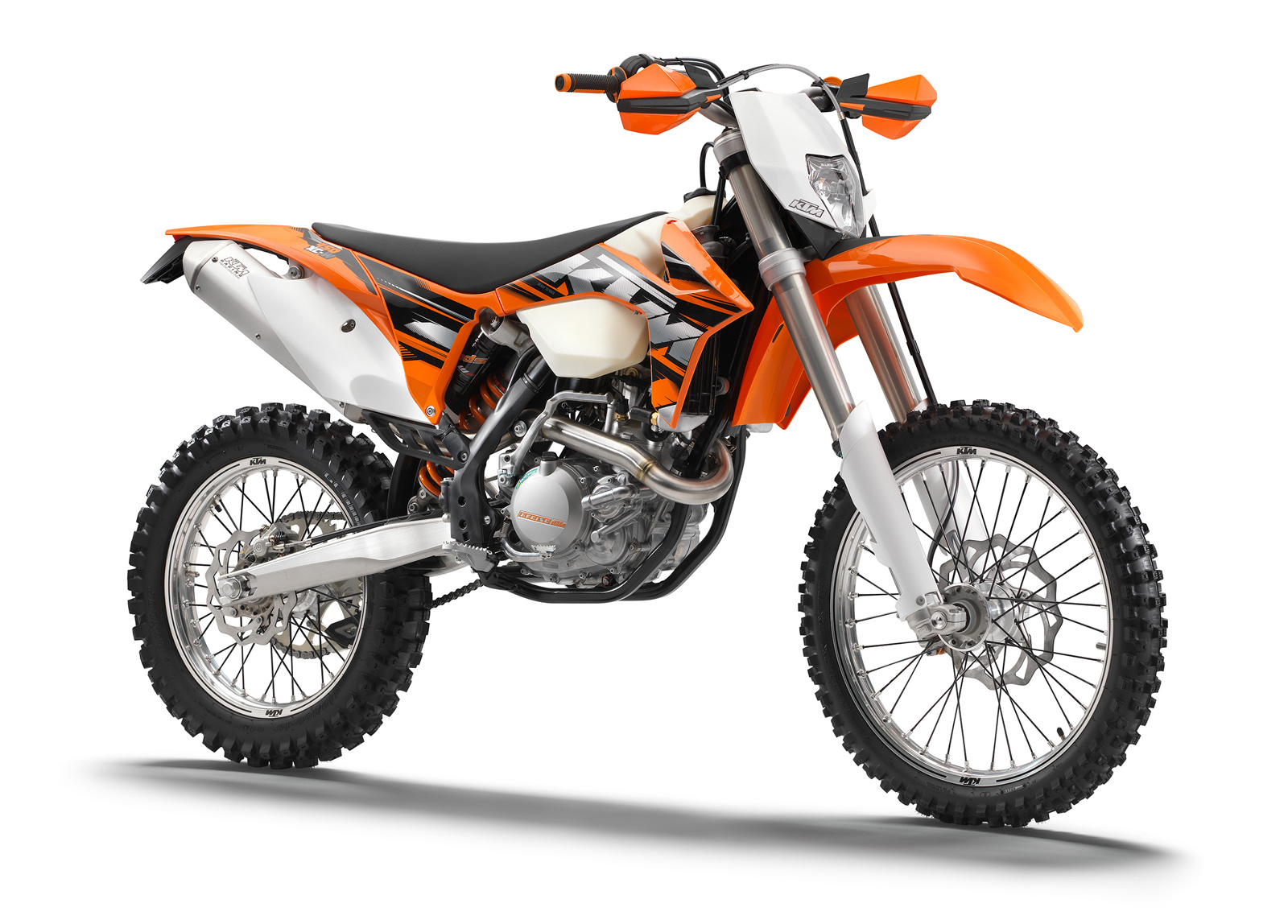You have scored consistent podium finishes from 2013-2018 (excluding 2016-2017 when you didn’t compete). Has your approach to this race changed much since 2013?
My approach actually hasn’t changed much over the years for Hattah. You just work on training on as much sand as you can and build your body up for the four-hour ride. No matter how hard you avoid it, you can’t try and find a way around working in the sand.
My injury in 2016 thankfully doesn’t impact my headspace going into an event such as this. I have done the rehabilitation, I’m confident in my knee. Ironically, it’s the rest of my body and the length of time taken to recover after an event that impacts me. I find that delay in recovery really frustrating. But the beauty of being in the industry after all these years is that I am a lot smarter than I used to be, and I know what’s needed to get the job done. You can definitely say that I get the job done smarter now than ever before!
Walk us through a lap at Hattah. How does lap one compare to another lap three hours later? Do the changing conditions require a flexible game plan?
First lap is pretty busy – everyone is excited to race and go fast. It’s always easier to follow in that first lap, compared to leading, just because it’s easier to follow compared to navigating the track markers on top of being agile and maintaining strong technical skills. The next few laps are awesome, with conditions being basically perfect!
After that, it’s so tough that you just hold on for the end. The tracks get deeper and you get more and more physically worn out. I remember last year coming out of Hattah and feeling like I’d been hit by a truck!
I have to say though that the most difficult aspect of the race is the lapped riders. It’s an aspect that people don’t realise is a challenge. After lap two, you start lapping the slower riders and it’s a major challenge to navigate around them safely over the full four hours.
Your game plan starts with Qualifying and aiming for a strong qualifying time. I actually argue that qualifying in the top five is better than first place, because you have the benefit of following in the first lap where you don’t need to be as cautious as first place. This wasn’t necessarily the case last year where the dust made vision super difficult, but typically it’s easier to follow in the first lap.
After Qualifiers, I actually consider myself a bit of a bulldog, where I find myself getting stronger as the race goes on. This year I want to I sprint harder to stay at the front, and then be able to bring it home all the way to the end. Everyone reaches that brick wall, but you just have to push through and keep focused. I think it’s comforting to know that everyone will be sore after Hattah, regardless of how fit you are.
Not long after Hattah is Round 7 of the 2019 AORC season at Broken Hill. The 2018 edition didn’t go as planned for you, how are you feeling heading into this year’s Broken Hill round?
I always like Cross Country formats because they seem to separate the men from the boys. Last year’s Broken Hill round didn’t go to plan but I’m excited to go back this year! Hopefully the area has been getting some rain and it’s a little less dusty this year, so we can bang bars and fight for the win!
You’ve been in the AORC season for many years now. Which of the three formats is your preferred racing format?
When you reach my age, you need to be strong in all formats. I really enjoy Cross Country’s because it really brings out the men from the boys, but I also really enjoy Sprints! Motorbike racing is one of the most physically demanding sports in the world and formats such as Cross Country really push you to your most extreme limits, which really teaches you about your strengths and weaknesses.
And what’s been your favourite location to compete at?
When it comes to favourite locations, it’s so tough to pick! I started competing in AORC back in 2006, when AORC brought in the Junior classes. I actually won my class title that year, which was a great year to start off in! I completed full seasons of AORC up until 2010 and 2011, where I competed in the World Enduro Championships over in Europe.
What are your goals for the remaining 2019 racing season?
Basically, I am working on doing the best I can. A round win in my class would be cool, but I always aim to remain consistent in everything I do. I train regularly with Michael Driscoll and we have a running joke that he’ll beat me this year, so that challenge is definitely giving me that extra drive to push hard.
The 2019 ISDE is a great close off to the racing season. I unfortunately had to pull out of the 2018 edition due to conflicting commitments, but I’m really excited for this year. I’ve ridden in Portugal before and their conditions are pretty rad, so I’m keen to head over there in November!
It’s definitely a big moment when you have your helmet painted and get your jersey, and then get to represent what I believe to be the best country in the world. I’ve competed all over the world, but nothing compares to home! Bonding with teammates that you don’t necessarily chat to during the year at these events, is really special!
